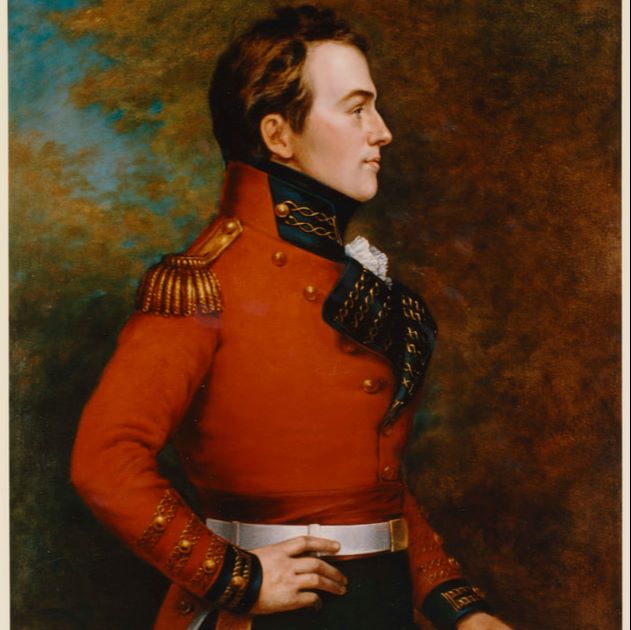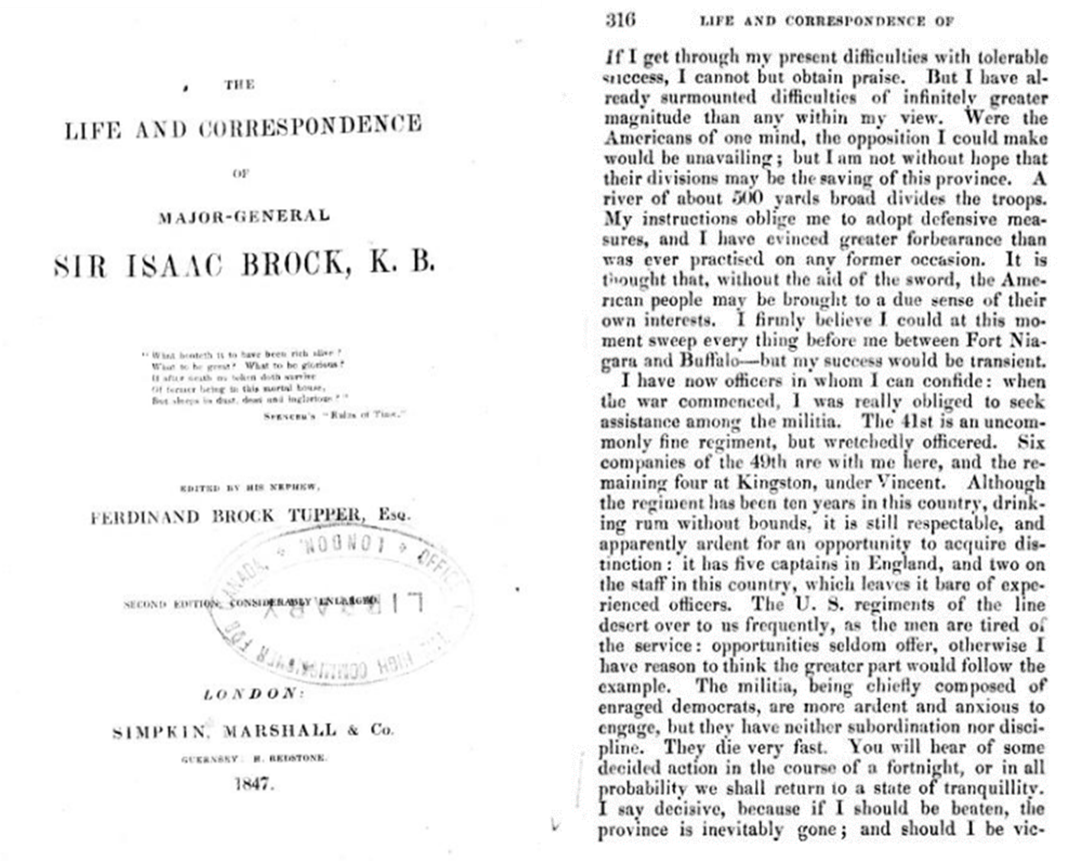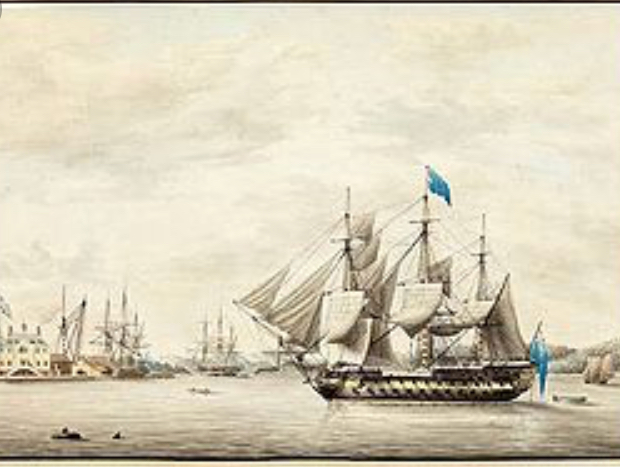|
Bt Tom Fournier The nephew of Major General Sir Isaac Brock published a book in 1845 titled, “The Life and Correspondence of Major General Sir Isaac Brock”. In the letters shared in the book, can be found some references to the 41st Regiment as it was found in Canada during the prelude to the War of 1812.
The one quote seems to often permeate writings on the War of 1812; it reads “The 41st is an uncommonly fine regiment, but wretchedly officered.” In 1846, a passionate rebuttal and defence of the Officers of the 41st Regiment appeared under a pseudonym in the United Service Magazine. It is believed that the author is in fact John Richardson who served with the 41st Regiment as a gentleman volunteer (serving as a private soldier but hoping to gain acclaim and glory and thus be promoted to an Officer’s role). He did ultimately gain an Ensigncy but in the 8th Regiment. Richardson went on to write his own history of the War of 1812, commonly called “Richardson’s War of 1812”. Born in Canada, he is also at times considered Canada’s first novelist writing works such as “The Canadian Brothers” and “Wacousta”. The 41st Regiment of Foot MLHG is very fortunate to have gained the permission of the Royal United Services Institute for Defence and Security Studies, Whitehall, London to transcribe this letter and share its details on our website. The letter can be found in our history section or by following this link: http://www.fortyfirst.org/transcripts-09-major-general-sir-isaac-brock-and-the-41st-regiment.html
0 Comments
On the 17th of August, 1799 the 41st Regiment set sail from Cork, Ireland to Quebec.
They sailed on the H.M.S. Asia, a transport ship. Typically, transports were old battle ships no longer fit for service in that capacity. The 41st Regiment had just finished a period of extensive recruiting and rebuilding. It had previously served in the West Indies and saw its strength greatly reduced by the illnesses associated with that geography. The regiment had transferred the remaining private soldiers to the 17th Regiment and returned to England with its Officers, Non-Commissioned Officers and Regimental Staff. As part of its final preparations for deployment, still understrength, the 41st Regiment accepted a draft of prisoners from the prison hulks (old ships used for confinement) and with these prisoners came a fever. From the letters and correspondence of the 41st Regiment comes a remarkable series of letters and notes that does much to illustrate the conditions on board the Asia, the efforts to deal with the fever and the ongoing fight to bring it under control upon arrival in Canada. They can be found here: http://www.fortyfirst.org/transcripts-05-disease-aboard-the-transport-asia.html Hello All,
I'm posting this message in as many places as I can because it would appear that word isn't getting out very well. I'm still seeing on Facebook and other groups that rumours are flying, so I would like to clear the record. |
AuthorsThese articles are written and compiled by members of the 41st Regiment Living History Group. Archives
January 2023
Categories |


